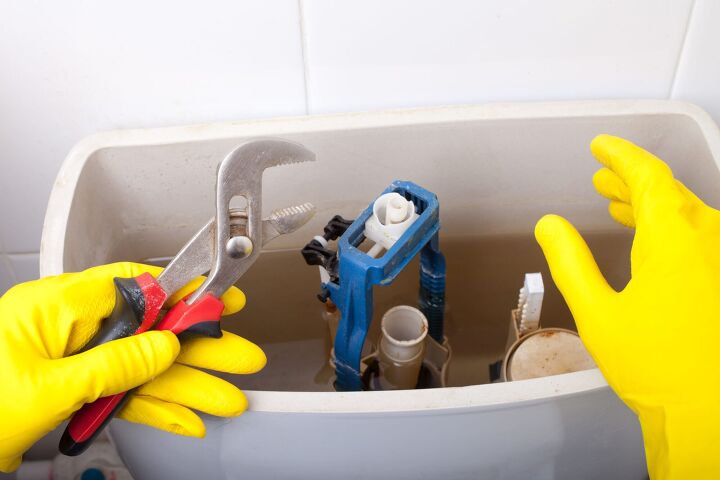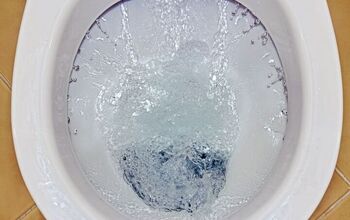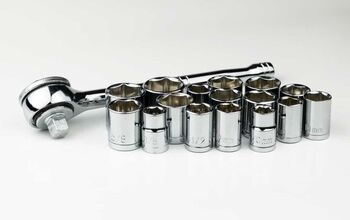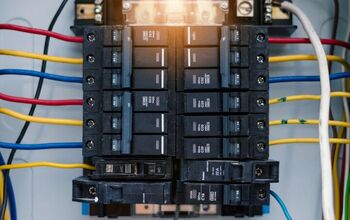Water Level In The Toilet Tank Keeps Dropping? (We Have a Fix!)

Is your toilet tank constantly losing water? Or, are you noticing that the water level in the tank is dropping? Even the smallest leak in your toilet tank can result in 200 gallons of water loss per day – if not more. Not only does this raise the price of your energy and/or utility bills, it puts serious strain on your plumbing systems.
Fortunately – unless you have a crack in your toilet tank – most toilet tank leaks can be resolved quickly, easily, and inexpensively. After all, when you have a toilet tank leak, the water can only escape into the bowl or onto the floor. If you have water on the floor, you have an external tank leak. Whereas, if the water is escaping into the toilet bowl, you have an internal leak.
When the water level in your toilet tank keeps dropping, this is an indication that you either have a problem with your fill valve or the flush valve system. Replacing the valves will keep the water level in your toilet tank at the level it is supposed to be at.
Let’s explore these issues in further detail, along with what you can do to confirm you have a toilet tank leak, and how to fix it before it becomes a much bigger and more expensive problem.
Do You Need to Install or Repair a Toilet?
Get free, zero-commitment quotes from pro contractors near you.

How Does A Toilet Work?
Before you start diagnosing and correcting the issue with your toilet tank, it’s important that you understand how a toilet works. Start by removing the tank lid and flushing the toilet a couple times. When you do this, here’s what happens:
- Upon pushing the handle, the chain lifts the flapper (also known as the tank ball or stopper), which seals the flush valve opening.
- With the flush valve opening uncovered, water flows through and into the toilet bowl.
- The water from the tank pushes the waste water in the toilet bowl into the main drain via the trap.
- Once the toilet tank is empty, the flapper valve closes back up, which allows water to run through the fill valve (or ball cock) to fill up the tank to the optimum level.
- When the toilet tank is full, a float mechanism on the fill valve stops the flow of water.
What Causes Toilet Tank Leaks?
Again, in most cases, a leaking toilet tank is caused by either an ineffective flush valve system or problems with the fill valve. More commonly than not, it is the former that’s causing the issue – the flush valve system. Each time that you flush your toilet, the flapper, or inlet valve, create a seal that prevents water from getting through.
Over time, though, this interior tank component can break down or start to malfunction. Eventually, the valve will lose its effectiveness and cause water to pass through into the toilet bowl. As a result, the water level in the toilet tank drops.
If you determine that the flush valve system seems to be functioning properly, the toilet tank leak may be caused by an issue with the fill valve. The fill valve, or ball cock (depending on which one your toilet has), may be in the wrong position or broken entirely. Perhaps it’s not closing all the way or the floater inside of the tank is set to stop in a position that’s too high.
In either case, the water in the toilet tank will keep flowing. When this occurs, the water will eventually make its way into the overflow tube in the tank. As a result, the tank will leak or start “ghost flushing.”
What Is Ghost Flushing?
Also called “phantom flushing,” ghost flushing happens when you hear that the toilet is refilling, without you having flushed the toilet at all. This noise may occur constantly or intermittently. Oftentimes, when it happens every few minutes, this is a strong indication of a major toilet tank leak that should be addressed immediately.
In other cases, the noise may occur every few hours. Although it doesn’t occur as often, a low toilet tank leak should still be taken care of as quickly as possible. If you notice the “ghost flushing” sound, this means you have either an internal or external leak. We already went over the two most common causes of internal toilet tank leaks above. Continue reading to learn what causes an external toilet tank leak.
External Toilet Tank Leaks
When you first discover that the water level in your toilet tank is dropping, examine the exterior of the toilet. Is there water on the outside surface? Do you have water pooling on the ground? Is there water on the walls around the toilet? If you answered “yes” to any of the aforementioned questions, you have an external toilet leak on your hands.
Although cracking and other problems may be the cause of an external tank leak, the most common cause has to do with the bottom section of the fill valve. Though, it may also be related to the supply line that is delivering water to the toilet or the seals between the toilet bowl and the toilet tank.
Regardless, consider the following troubleshooting steps to determine the cause of the issue and how to fix it:
- If you notice water dripping down from the base of the toilet tank, examine the locknut. If necessary, tighten it to secure. If tightening does not correct the problem, empty the toilet tank and clean the surrounding area. Inspect the washer on the fill valve to make sure it is functioning properly. This should be providing a seal from inside of the tank. If you notice any components need replacing, replace them accordingly.
- Examine the supply line that delivers water to the toilet. Depending on the condition, it may need replacing. In fact, the supply line should be replaced approximately every five years.
- If you detect water on the back of the toilet base, you may need to replace the seals that are attaching the toilet tank to the toilet bowl. When these seals are replaced, always replace the bolts, washers, and gaskets at the same time.
How To Confirm You Have A Toilet Tank Leak
Perhaps you’ve started hearing some strange sounds or you’ve noticed some changes in the water level of the toilet bowl or tank. However, you still want to confirm that you do, in fact, have a toilet tank leak. To do this, you can perform a very simple test.
Start by placing a colored toilet tablet into the tank once it is completely full. Let this sit for about ten to fifteen minutes. When you return, examine the toilet bowl. If you see that the color of the tablet has escaped into the bowl, this indicates you have a toilet tank leak that should be addressed as soon as possible.
Successfully Repairing Your Toilet
While most repairs for toilet tank leaks are relatively simple, there are still some things you should keep in mind to avoid any further issues.
- Always adhere to any codes that may apply to your work.
- If the tips above don’t fix the problem, or you have any doubts or questions about the repair, get in touch with a licensed plumber.
- Never overtighten bolts, nuts, or any other connectors. Overtightening metal components can result in cracking of the toilet. Whereas, overtightening plastic connectors will damage the connectors themselves.
- Practice care when turning fasteners and connectors to prevent damage. A great technique to protect the finish on metal fasteners is to apply tape to jaws of a wrench or pliers.
- When you remove the tank lid, carefully and slowly lift it off. Then, place it in a safe spot to avoid cracking it.
- Make sure that the replacement parts you purchase are right for your toilet. Always choose the repair component based on the existing part. It helps to bring the existing part with you to the store to find the proper replacement.
Note: If the repair involves adjusting or replacing the fill and flush valve assemblies, requires that you turn off the water supply and empty the tank before you can begin any work. When you disconnect the supply line, make sure you have a bowl or bucket in place to catch any water that escapes.
Do You Need to Install or Repair a Toilet?
Get free, zero-commitment quotes from pro contractors near you.

Related Questions
Why isn’t my toilet tank filling back up?
Oftentimes, the cause of a toilet tank not filling up all the way is the float. If the float is positioned too low, it will stop the flow of water too early and leave you with an empty tank or not enough water.
How much water should be in a toilet tank?
The ideal amount of water in a toilet tank is about one to two inches below the fill valve and overflow tube, or the large open pipe in the middle of the tank. If the water level is higher or lower than this, it’s likely off-balance.
How long should it take for a toilet tank to fill back up?
The average toilet tank takes approximately 1.5 to 3 minutes to refill after a flush. If it’s taking longer, then you’ll need to perform an inspection to find the source of the issue.

Jessica considers herself a home improvement and design enthusiast. She grew up surrounded by constant home improvement projects and owes most of what she knows to helping her dad renovate her childhood home. Being a Los Angeles resident, Jessica spends a lot of her time looking for her next DIY project and sharing her love for home design.
More by Jessica Stone












![10 Best Electric Pressure Washers – [2022 Reviews & Guide]](https://cdn-fastly.upgradedhome.com/media/2023/07/31/9070600/10-best-electric-pressure-washers-2022-reviews-guide.jpg?size=350x220)














